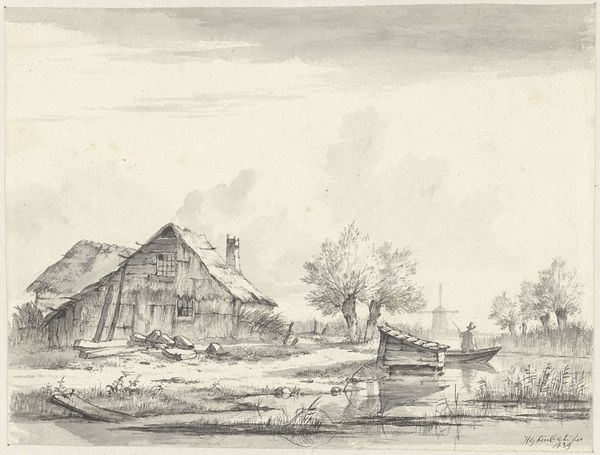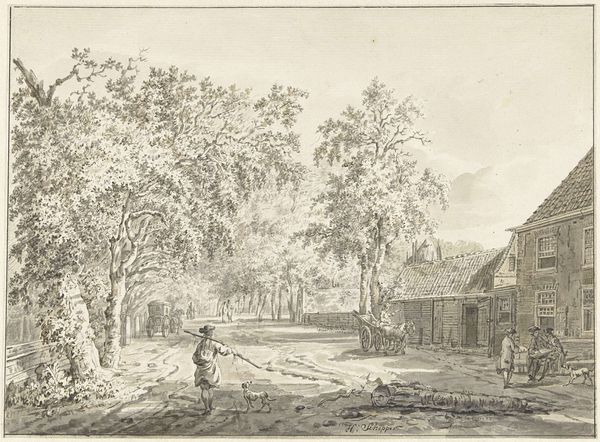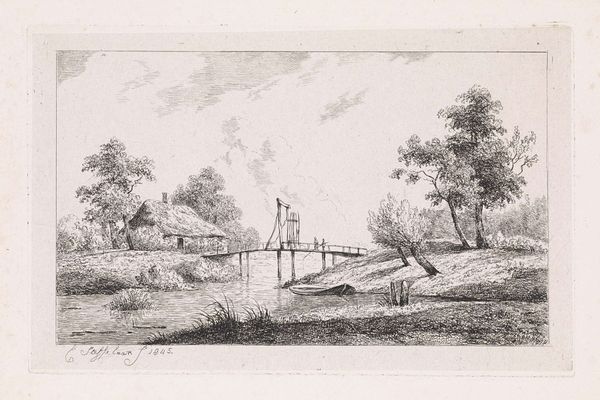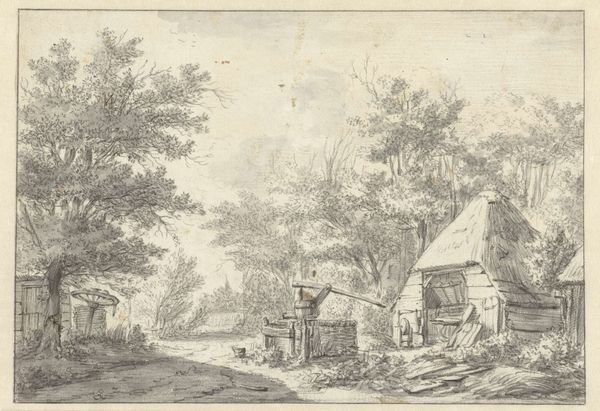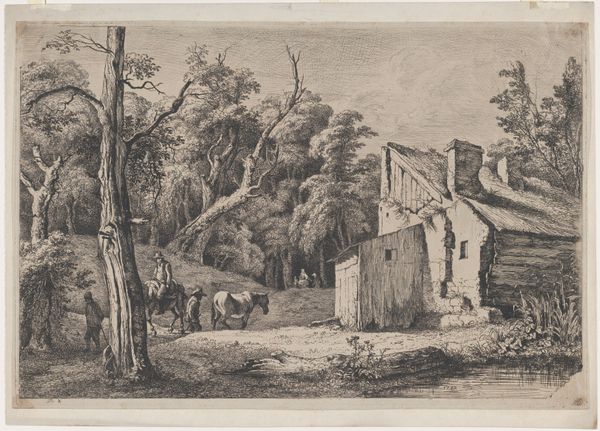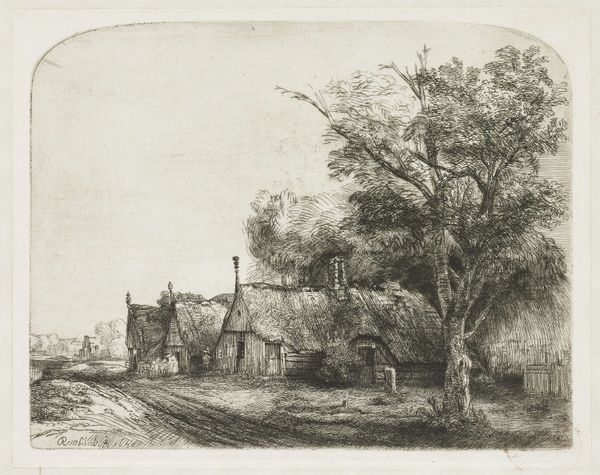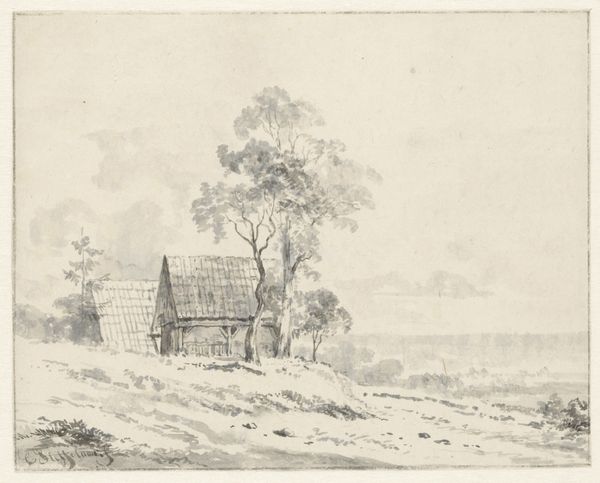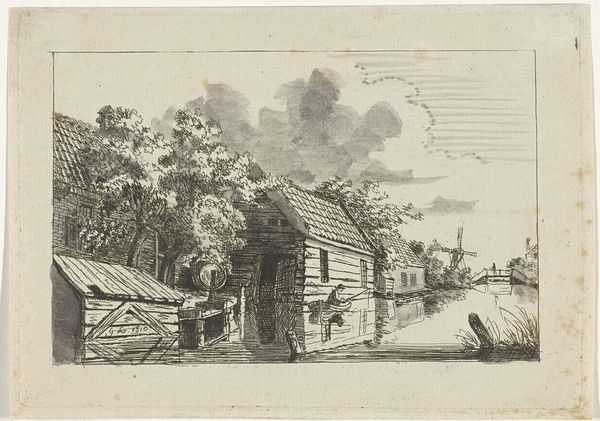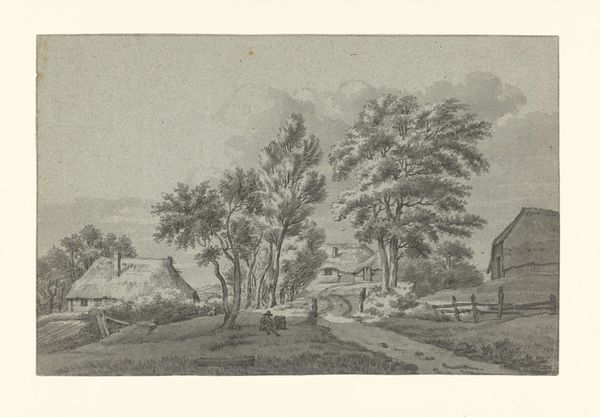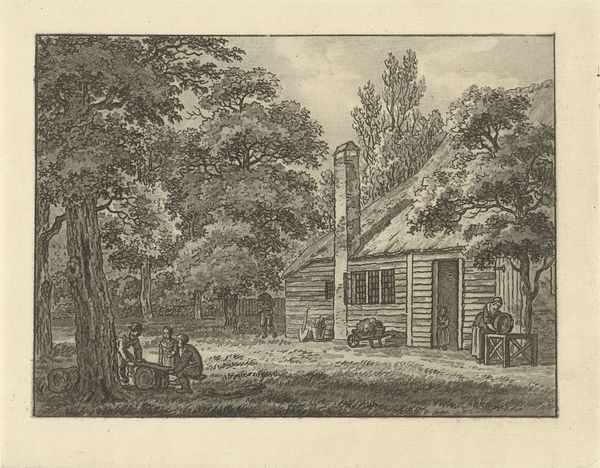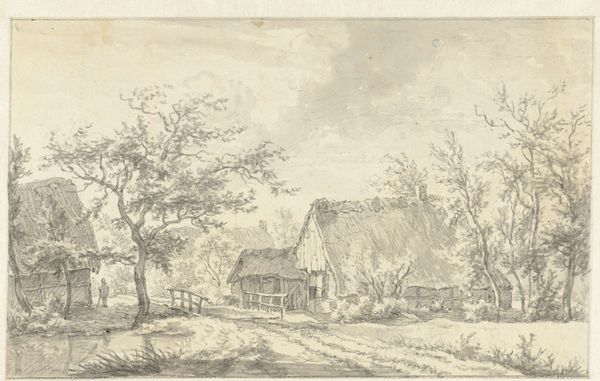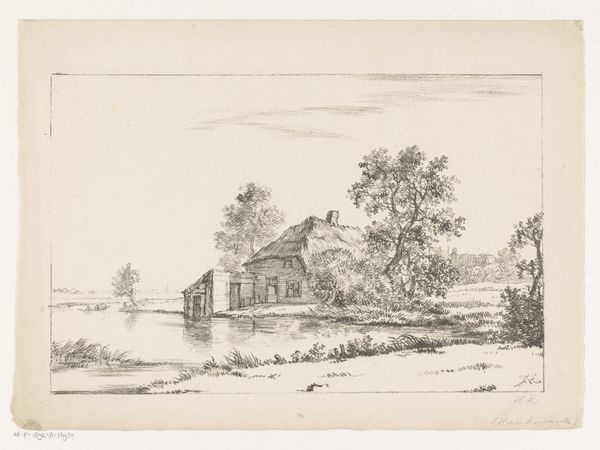
drawing, pencil
#
drawing
#
dutch-golden-age
#
pen sketch
#
pencil sketch
#
landscape
#
pencil
#
realism
Dimensions: height 196 mm, width 298 mm
Copyright: Rijks Museum: Open Domain
Curator: We're looking at "Farmhouse on a Canal," a pencil and pen drawing created sometime between 1600 and 1630 by Esaias van de Velde. Editor: It has a delicate quality. The shading is gentle, almost atmospheric. The buildings and foliage seem to blend softly. I find the overcast tones very appealing. Curator: Van de Velde was crucial in popularizing landscape painting in the Dutch Golden Age. Before him, landscapes often served as backgrounds for allegorical or historical scenes. He placed ordinary Dutch life front and center, elevating it as a subject worthy of artistic attention. This drawing exemplifies that shift, it's devoid of the overtly dramatic or heroic. Editor: The very choice of a humble farmhouse becomes radical. You have to consider what it meant to depict ordinary labor and rural life amidst the intense social changes. Were these landscapes simply pretty pictures, or could they be quiet commentaries on a rapidly changing world? It’s important to contextualize the increasing urbanization within the painting and acknowledge the political climate that produced these representations of land and ownership. Curator: Exactly. And consider the burgeoning art market during this period. These images tapped into a sense of national identity and pride. There was an economic incentive to show these pastoral views. You can also view this through lens of urbanization: it depicts a space less crowded, more tranquil in the background versus the fast life of the wealthy at that time. Editor: How much were people willing to ignore? To simply enjoy an aestheticized, possibly idealized view of "country life?" This reminds us to reflect on our contemporary desire for art to have overt, politically-charged meaning. Was this quiet resistance or subtle reinforcement of the existing social order? I guess there is never a perfect definition of that time. Curator: An excellent point. So much in history, as in art, resists easy definition. Thank you for helping to contextualize our reflection. Editor: Indeed. The artwork reminds us to keep our focus, encouraging us to contemplate how a simple scene encapsulates far more complicated dynamics than initially apparent.
Comments
No comments
Be the first to comment and join the conversation on the ultimate creative platform.
